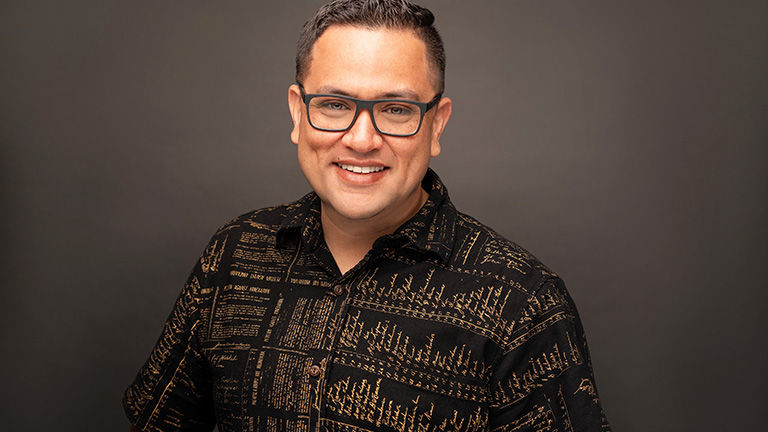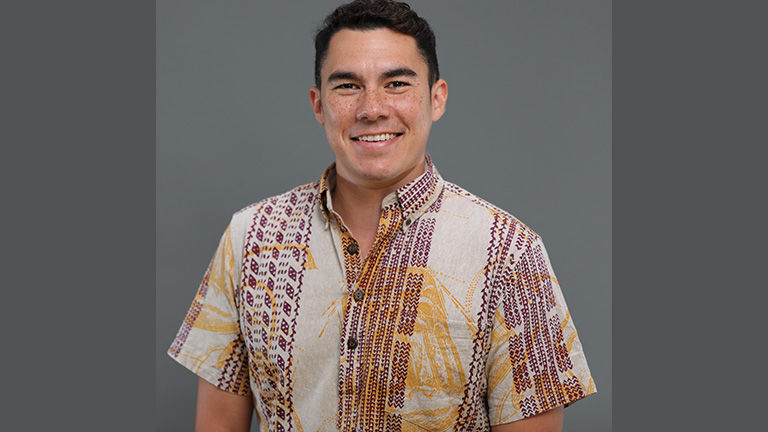Kuhio Lewis, CEO for the Council for Native Hawaiian Advancement (CNHA), hasn’t forgotten some of the positives Hawaii residents enjoyed during the Aloha State’s tourism shutdown at the peak of the COVID-19 crisis.
“We could actually go to the beach and find a parking stall,” Lewis said. “You could go to Waikiki, and there weren’t long lines. We could actually enjoy some of the areas we stay away from now.”
A member-based nonprofit founded in 2001, CNHA’s website says its mission is “to enhance the cultural, economic, political and community development of Native Hawaiians,” but Lewis said some of the unmistakable benefits residents enjoyed during Hawaii’s pandemic-driven tourism shutdown provided “a wakeup call” for the organization.
We realized, ‘Hey, we need to plug into tourism.’ It was like a lightbulb went off and … opened our eyes to what it could mean to pivot some of the work we already do and connect it to tourism.
“We realized, ‘Hey, we need to plug into tourism,’” Lewis recalled. “It was like a lightbulb went off and … opened our eyes to what it could mean to pivot some of the work we already do and connect it to tourism.”
How Did CNHA Get Control of the Hawaii Visitor Experience?
In late May, the Hawaii Tourism Authority (HTA), which oversees the state’s visitor marketing efforts, awarded CNHA with a two-and-half-year, $27 million destination stewardship contract. The deal has an option for two one-year extensions, according to the HTA, and tasks the Native Hawaii nonprofit with developing a post-arrival visitor marketing and education campaign, as well creating a range of community enrichment programs and assisting local organizations and businesses in developing solutions to better manage tourism hotspots.
CNHA’s journey to securing that destination stewardship contract has not, however, been an easy one.
The Native Hawaiian nonprofit initially lost its bid to take over North American tourism marketing for Hawaii, as well as destination management in the islands, when the HTA awarded a contract for both those responsibilities to longtime Aloha State marketer, the Hawaii Visitors and Convention Bureau (HVCB) in December of 2021.
 Kuhio Lewis, CEO for CNHA
Kuhio Lewis, CEO for CNHA
Credit: 2023 Council for Native Hawaiian AdvancementCNHA protested that decision and was later awarded a revised version of that combined marketing and management contract in the spring of 2022. HVCB subsequently filed a protest of that award in the summer of 2022, which ultimately resulted in a decision by state officials to launch an entirely new contract Request For Proposal (RFP) process calling for two separate bids — one for North American tourism marketing and one for destination stewardship across the Islands.
In the end, CNHA landed the lucrative stewardship deal, while the HTA awarded its two-and-a-half-year, $38 million North American marketing contract to the HVCB, which has overseen tourism branding efforts in Hawaii’s largest source market for decades.
To be clear on the split that occurred, HVCB will be in charge of pre-arrival — so getting them to book their tickets and come to the islands. Once they hit Hawaii, they’re CNHA’s kuleana (responsibility).
“To be clear on the split that occurred, HVCB will be in charge of pre-arrival — so getting them to book their tickets and come to the islands,” Lewis explained. “Once they hit Hawaii, they’re CNHA’s kuleana (responsibility).”
CNHA Will Emphasize Native Hawaiians and Mindful Tourism
Lewis sees CNHA’s new role within the Aloha State tourism industry as a critical step forward for Native Hawaiians.
“The native Hawaiian community — we are in a crisis,” he explained. “More than half of our population has moved away from the islands. We're in survival mode, and … I think the pandemic helped us realize what kind of conversations we need to be having. Tourism is a chief economic driver of the state. It's what paves our roads, pays for our education. Being a part of that conversation is important, so we can find balance in how we not only manage this destination, but how we change the trajectory of Hawaii's future.”
The native Hawaiian community — we are in a crisis.
Tyler Iokepa Gomes, the chief administrator of CNHA’s Kilohana division, which oversees all the nonprofit’s tourism efforts, said work is underway on the post-arrival marketing and education campaign for Hawaii visitors. Likely to roll out early next year, that messaging will, in part, be aimed at educating travelers about how to vacation mindfully across the islands, according to Gomes. Showcasing voluntourism and agritourism products, as well as culturally enriching and environmentally friendly experiences, will be another key tenant of the campaign.
And elements of that messaging will hopefully be first available to travelers on their flight to the islands, Gomes said, though they will certainly be present in places such as Hawaii’s airports, hotel lobbies, on in-room televisions and on popular apps travelers are likely to use during their vacations.
“Preexisting apps that push ads, like Waze, for example, are a really great opportunity to hit them while they're moving, based on where their location is,” Gomes explained.
 Tyler Iokepa Gomes, chief administrator of CNHA’s Kilohana division
Tyler Iokepa Gomes, chief administrator of CNHA’s Kilohana division
Credit: 2023 Council for Native Hawaiian AdvancementGomes said helping smaller Hawaii businesses, nonprofits and community groups to develop or expand on existing tourism offerings, enabling them to connect more visitors with authentic experiences, is another stewardship contract objective. The group will also design a quality assurance program for the HTA to authenticate not only experiences and tour guides, but also things such as food, music and art.
Whether or not they themselves are Native Hawaiian practitioners, we want to make sure that knowledge base is available to all of our tour guides, so they can communicate it and share it as a brand to our visitors.
“We'll be working on a tour guide certification program that includes some of the basic common-sense stuff, like safety and familiarity with place and recommendations,” Gomes said. “But we also want them to be really well versed in culture, in Hawaiian place-based knowledge. Whether or not they themselves are Native Hawaiian practitioners, we want to make sure that knowledge base is available to all of our tour guides, so they can communicate it and share it as a brand to our visitors.”
What Else to Expect From CNHA
Lewis noted CNHA is still ironing out some details of its stewardship contract with the HTA, but he anticipated those negotiations will be finalized later this month.
“This is all new to them; they're used to hiring HVCB for everything,” Lewis said. “They're trying to figure out, ‘OK, what does this look like now?’ It's just a matter of everybody restructuring, recalibrating to adjust to this new time.”
Lewis added that precisely how the state will manage visitor hotspots — or locations across the islands where overtourism has created tension with residents— is an area where strategies continue to be discussed and are likely to evolve with time and experience.
My measurement tool is going to be when you drive down Kalakaua [the main oceanfront avenue in Waikiki], are you going to see a Hawaii business over there? Right now, there are none. That's how I'm going to measure success.
“We're at the table now, but there are more conversations that need to be had,” he said. “When you talk about hotspot mitigation or management, it really involves a multitude of agencies — federal, state, county — and you’ve got to be able to facilitate and convene conversations, so that it all moves together. I think it's our collective responsibility — HTA, HVCB, CNHA — to be working toward that."
CNHA has, meanwhile, already enlisted a private research firm to work on objectively measuring the impact the nonprofit’s tourism programs actually have on Hawaii’s communities and its environment.
“You can look at numbers and what people's experience were like, but for me, it's also economics,” Lewis said. “My measurement tool is going to be when you drive down Kalakaua [the main oceanfront avenue in Waikiki], are you going to see a Hawaii business over there? Right now, there are none. That's how I'm going to measure success: by how many Hawaiian businesses are along that thoroughfare. Right now, it's all these chain restaurants. It’s chain retailers. We've lost focus on what matters, and that's the future of Hawaii.”